-
 Bitcoin
Bitcoin $94,175.9341
-0.45% -
 Ethereum
Ethereum $1,797.2526
-1.80% -
 Tether USDt
Tether USDt $0.9998
-0.02% -
 XRP
XRP $2.0914
-4.02% -
 BNB
BNB $597.8377
0.98% -
 Solana
Solana $144.2395
-1.61% -
 USDC
USDC $1.0000
0.00% -
 Dogecoin
Dogecoin $0.1677
-3.47% -
 TRON
TRON $0.2453
-0.99% -
 Cardano
Cardano $0.6564
-4.59% -
 Sui
Sui $3.2963
-4.27% -
 Chainlink
Chainlink $13.4246
-4.69% -
 Avalanche
Avalanche $19.6453
-1.56% -
 UNUS SED LEO
UNUS SED LEO $8.6682
-4.59% -
 Stellar
Stellar $0.2563
-4.26% -
 Toncoin
Toncoin $2.9933
-1.17% -
 Shiba Inu
Shiba Inu $0.0...01252
-3.20% -
 Hedera
Hedera $0.1726
-2.80% -
 Bitcoin Cash
Bitcoin Cash $359.1546
-0.22% -
 Hyperliquid
Hyperliquid $19.9280
-3.34% -
 Litecoin
Litecoin $81.7450
-8.38% -
 Polkadot
Polkadot $3.8700
-2.94% -
 Dai
Dai $1.0001
0.01% -
 Monero
Monero $284.8938
2.89% -
 Bitget Token
Bitget Token $4.2954
-0.62% -
 Ethena USDe
Ethena USDe $1.0002
0.00% -
 Pi
Pi $0.5866
-1.01% -
 Pepe
Pepe $0.0...07897
-5.11% -
 Bittensor
Bittensor $370.6814
1.71% -
 Uniswap
Uniswap $4.8861
-4.02%
Cardano wallet address
A Cardano wallet address, represented by a unique string of characters, serves as a crypto-safe and efficient identifier for an account on the Cardano blockchain.
Jan 13, 2025 at 12:04 am
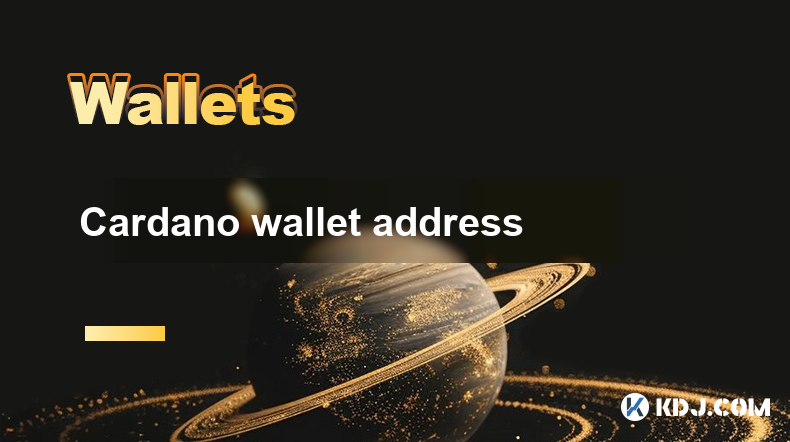
Key Points
- Understanding Cardano Wallet Addresses
- Types of Cardano Wallet Addresses
- Generating Cardano Wallet Addresses
- Advantages of Using Cardano Native Addresses
- Best Practices for Managing Cardano Wallet Addresses
Understanding Cardano Wallet Addresses
In the realm of cryptocurrency, a wallet address serves as a unique identifier for an account, facilitating transactions and offering security for digital assets. Cardano, a prominent blockchain platform, employs a robust system of wallet addresses designed to enhance privacy, efficiency, and interoperability.
A Cardano wallet address is a sequence of characters that represents a specific account on the Cardano blockchain. These addresses are used to send and receive ADA, the native cryptocurrency of the Cardano network. They are also utilized to interact with decentralized applications (dApps) built on the Cardano platform.
Types of Cardano Wallet Addresses
Cardano utilizes three main types of wallet addresses:
1. Base Addresses (Addresses Beginning with "addr")
Base addresses are the most common type of Cardano wallet address. They are generated using the Extended Public Key (xpub) of a hierarchical deterministic (HD) wallet. Base addresses offer a balance between security and accessibility.
2. Reward Addresses (Addresses Beginning with "stake")
Reward addresses are used to receive staking rewards on the Cardano blockchain. They are derived from the base address associated with a staking wallet. Staking addresses provide enhanced security for rewards, as they are not used for any other transactions.
3. Enterprise Addresses (Addresses Beginning with "ent")
Enterprise addresses are tailored for business and institutional users. They offer increased flexibility and control over transaction management. Enterprise addresses can be customized to accommodate complex business requirements and provide enhanced security features.
Generating Cardano Wallet Addresses
Generating a Cardano wallet address is straightforward and involves the following steps:
- Create a Cardano wallet using a reputable provider (e.g., Daedalus, Yoroi, or Nami).
- Choose a derivation path to generate your wallet's xpub.
- Derive the base address from the xpub using the appropriate Cardano HD wallet tool.
- To generate a reward address, use the "purpose" value 1852 and a derivation path that includes the base address.
Advantages of Using Cardano Native Addresses
Cardano native addresses offer several benefits:
- Enhanced Security: Cardano's address system incorporates strong cryptography, ensuring secure storage and management of digital assets.
- Interoperability: Cardano addresses are compatible with a wide range of wallets and dApps, facilitating seamless transactions and interaction with the broader Cardano ecosystem.
- Privacy: Cardano native addresses provide a higher level of privacy compared to traditional cryptocurrency addresses. Users can create multiple addresses, each with a unique derivation path, to enhance transaction confidentiality.
Best Practices for Managing Cardano Wallet Addresses
To ensure optimal security and management of your Cardano wallet addresses, follow these best practices:
- Use Reputable Wallets: Choose well-established wallets that prioritize security and have a proven track record of reliability.
- Keep Private Keys Safe: Store your private keys securely and never share them with anyone. Consider using a hardware wallet or storing keys offline.
- Manage Multiple Addresses: Create multiple Cardano addresses for different purposes (e.g., one for receiving funds, another for staking rewards).
- Monitor Transactions: Regularly monitor your Cardano wallet addresses to track incoming and outgoing transactions and identify any suspicious activity.
FAQs
Q: What is the difference between a base address and a stake address?
A: A base address is used for general transactions, while a stake address is used specifically to receive staking rewards. Base addresses offer a balance between security and accessibility, while stake addresses enhance security by segregating rewards from other transactions.
Q: How do I recover my Cardano wallet if I lose my private keys?
A: Recovery of a Cardano wallet without private keys is not straightforward. You may need to use a seed phrase or contact the wallet provider for assistance. However, it is highly recommended to keep your private keys securely and avoid relying on recovery methods.
Q: Can I use my Cardano wallet address on other blockchains?
A: Cardano wallet addresses are specific to the Cardano blockchain and are not compatible with other blockchain networks. Each blockchain has its own unique address system.
References:
https://docs.cardano.org/en/latest/explore-cardano/wallet-addresses/index.html
Disclaimer:info@kdj.com
The information provided is not trading advice. kdj.com does not assume any responsibility for any investments made based on the information provided in this article. Cryptocurrencies are highly volatile and it is highly recommended that you invest with caution after thorough research!
If you believe that the content used on this website infringes your copyright, please contact us immediately (info@kdj.com) and we will delete it promptly.
- Trump set to hold gala dinner for memecoin holders as criticism and impeachment talk grow.
- 2025-05-06 16:25:12
- 3 Reasons Why Kaspa (KAS) Price Is Flat Following the Crescendo Update
- 2025-05-06 16:25:12
- 🚨 $BTC /USDT – Bullish or Bearish Divergence at Play? 🔥
- 2025-05-06 16:20:12
- Ethereum (ETH) Price Prediction: Market Dynamics Suggest the Long-term Uptrend Remains Intact
- 2025-05-06 16:20:12
- Bitcoin (BTC) Price Prediction: BTC Slumps Below $98,000 Resistance, Targeting $93,500 Support
- 2025-05-06 16:15:12
- Pre-emptive Bug Fixes to ZK ElGamal Proof Program
- 2025-05-06 16:15:12
Related knowledge
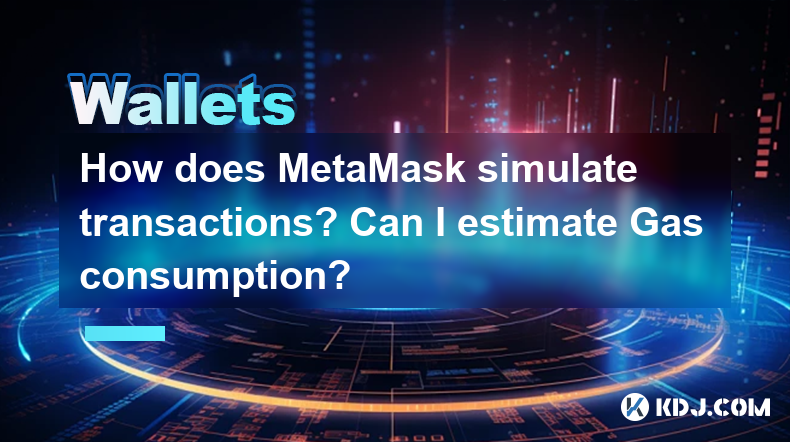
How does MetaMask simulate transactions? Can I estimate Gas consumption?
May 06,2025 at 03:49pm
How does MetaMask simulate transactions? Can I estimate Gas consumption?MetaMask, a popular Ethereum wallet and gateway to blockchain applications, offers users the ability to simulate transactions and estimate gas consumption before they are executed on the Ethereum network. This feature is crucial for users to understand the potential costs and outcom...
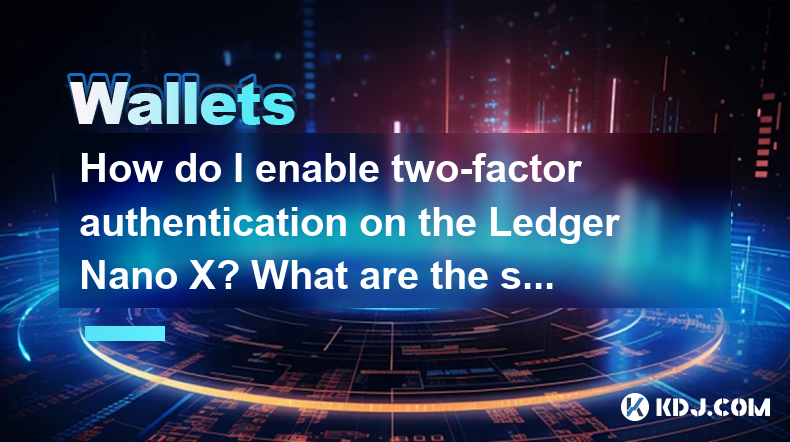
How do I enable two-factor authentication on the Ledger Nano X? What are the security options?
May 02,2025 at 09:49pm
Enabling two-factor authentication (2FA) on your Ledger Nano X is a critical step in securing your cryptocurrency assets. The Ledger Nano X offers robust security options that enhance the protection of your digital wealth. In this article, we will guide you through the process of enabling 2FA on your Ledger Nano X and explore the various security featur...
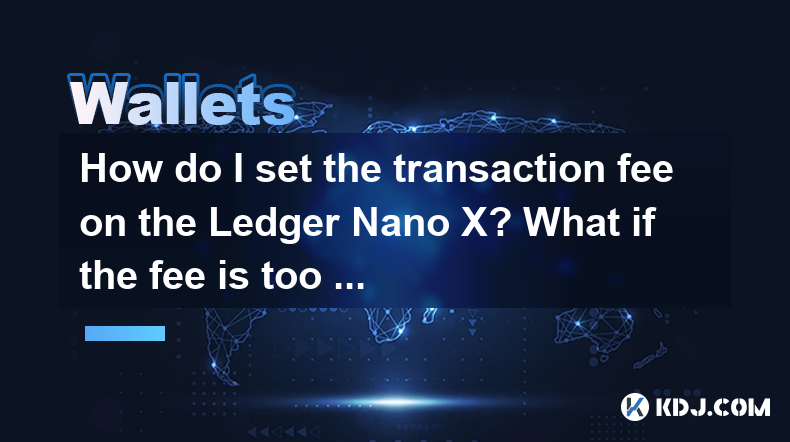
How do I set the transaction fee on the Ledger Nano X? What if the fee is too high?
May 05,2025 at 09:21pm
Setting the transaction fee on your Ledger Nano X is an essential part of managing your cryptocurrency transactions efficiently. The transaction fee directly impacts how quickly your transaction is processed and confirmed on the blockchain. In this guide, we will walk you through the steps to set the transaction fee on your Ledger Nano X, and what to do...

How do I export the Ledger Nano X transaction history? How long can the data be saved?
May 04,2025 at 07:21am
Introduction to Ledger Nano X and Transaction HistoryThe Ledger Nano X is a hardware wallet designed to store your cryptocurrency safely. It supports a wide range of cryptocurrencies and offers robust security features. One of the essential aspects of managing your cryptocurrencies is keeping track of your transaction history. The Ledger Nano X allows y...
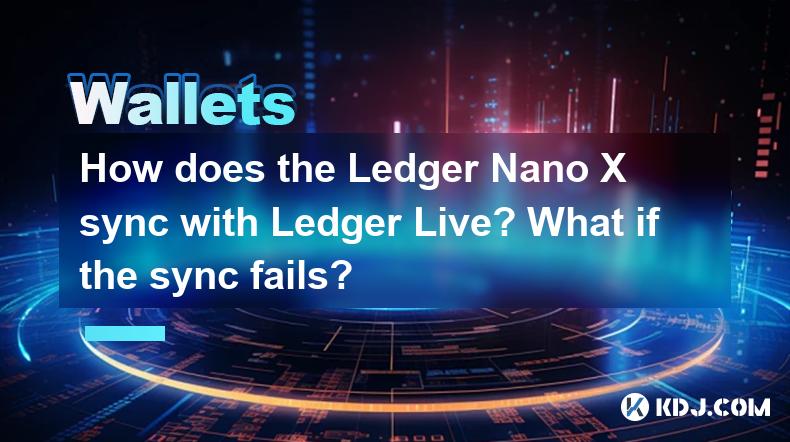
How does the Ledger Nano X sync with Ledger Live? What if the sync fails?
May 04,2025 at 12:07pm
The Ledger Nano X is a popular hardware wallet that allows users to securely manage their cryptocurrency assets. One of the key features of the Ledger Nano X is its ability to sync with the Ledger Live application, which provides a user-friendly interface for managing your crypto portfolio. In this article, we will explore how the Ledger Nano X syncs wi...
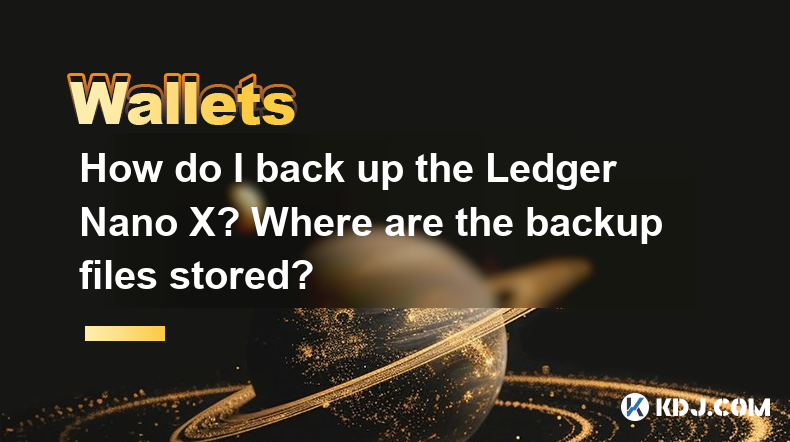
How do I back up the Ledger Nano X? Where are the backup files stored?
May 06,2025 at 09:07am
Introduction to Backing Up Your Ledger Nano XBacking up your Ledger Nano X is crucial for safeguarding your cryptocurrencies. A backup ensures that you can recover your funds if your device is lost, stolen, or damaged. In this article, we will delve into the step-by-step process of backing up your Ledger Nano X, as well as where the backup files are sto...

How does MetaMask simulate transactions? Can I estimate Gas consumption?
May 06,2025 at 03:49pm
How does MetaMask simulate transactions? Can I estimate Gas consumption?MetaMask, a popular Ethereum wallet and gateway to blockchain applications, offers users the ability to simulate transactions and estimate gas consumption before they are executed on the Ethereum network. This feature is crucial for users to understand the potential costs and outcom...

How do I enable two-factor authentication on the Ledger Nano X? What are the security options?
May 02,2025 at 09:49pm
Enabling two-factor authentication (2FA) on your Ledger Nano X is a critical step in securing your cryptocurrency assets. The Ledger Nano X offers robust security options that enhance the protection of your digital wealth. In this article, we will guide you through the process of enabling 2FA on your Ledger Nano X and explore the various security featur...

How do I set the transaction fee on the Ledger Nano X? What if the fee is too high?
May 05,2025 at 09:21pm
Setting the transaction fee on your Ledger Nano X is an essential part of managing your cryptocurrency transactions efficiently. The transaction fee directly impacts how quickly your transaction is processed and confirmed on the blockchain. In this guide, we will walk you through the steps to set the transaction fee on your Ledger Nano X, and what to do...

How do I export the Ledger Nano X transaction history? How long can the data be saved?
May 04,2025 at 07:21am
Introduction to Ledger Nano X and Transaction HistoryThe Ledger Nano X is a hardware wallet designed to store your cryptocurrency safely. It supports a wide range of cryptocurrencies and offers robust security features. One of the essential aspects of managing your cryptocurrencies is keeping track of your transaction history. The Ledger Nano X allows y...

How does the Ledger Nano X sync with Ledger Live? What if the sync fails?
May 04,2025 at 12:07pm
The Ledger Nano X is a popular hardware wallet that allows users to securely manage their cryptocurrency assets. One of the key features of the Ledger Nano X is its ability to sync with the Ledger Live application, which provides a user-friendly interface for managing your crypto portfolio. In this article, we will explore how the Ledger Nano X syncs wi...

How do I back up the Ledger Nano X? Where are the backup files stored?
May 06,2025 at 09:07am
Introduction to Backing Up Your Ledger Nano XBacking up your Ledger Nano X is crucial for safeguarding your cryptocurrencies. A backup ensures that you can recover your funds if your device is lost, stolen, or damaged. In this article, we will delve into the step-by-step process of backing up your Ledger Nano X, as well as where the backup files are sto...
See all articles




















































































